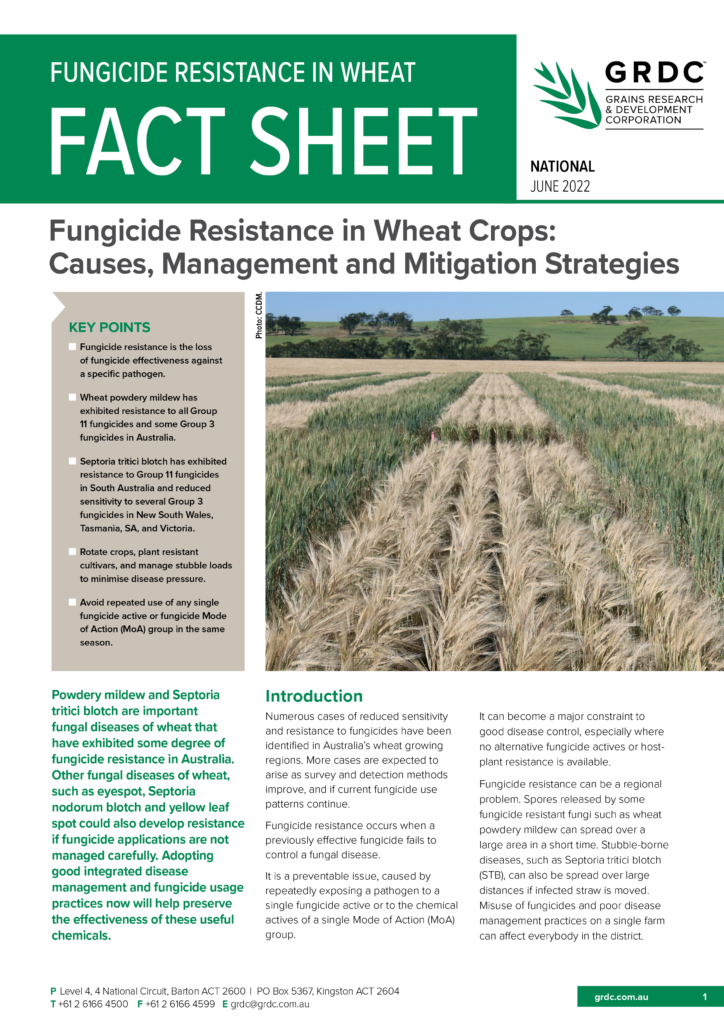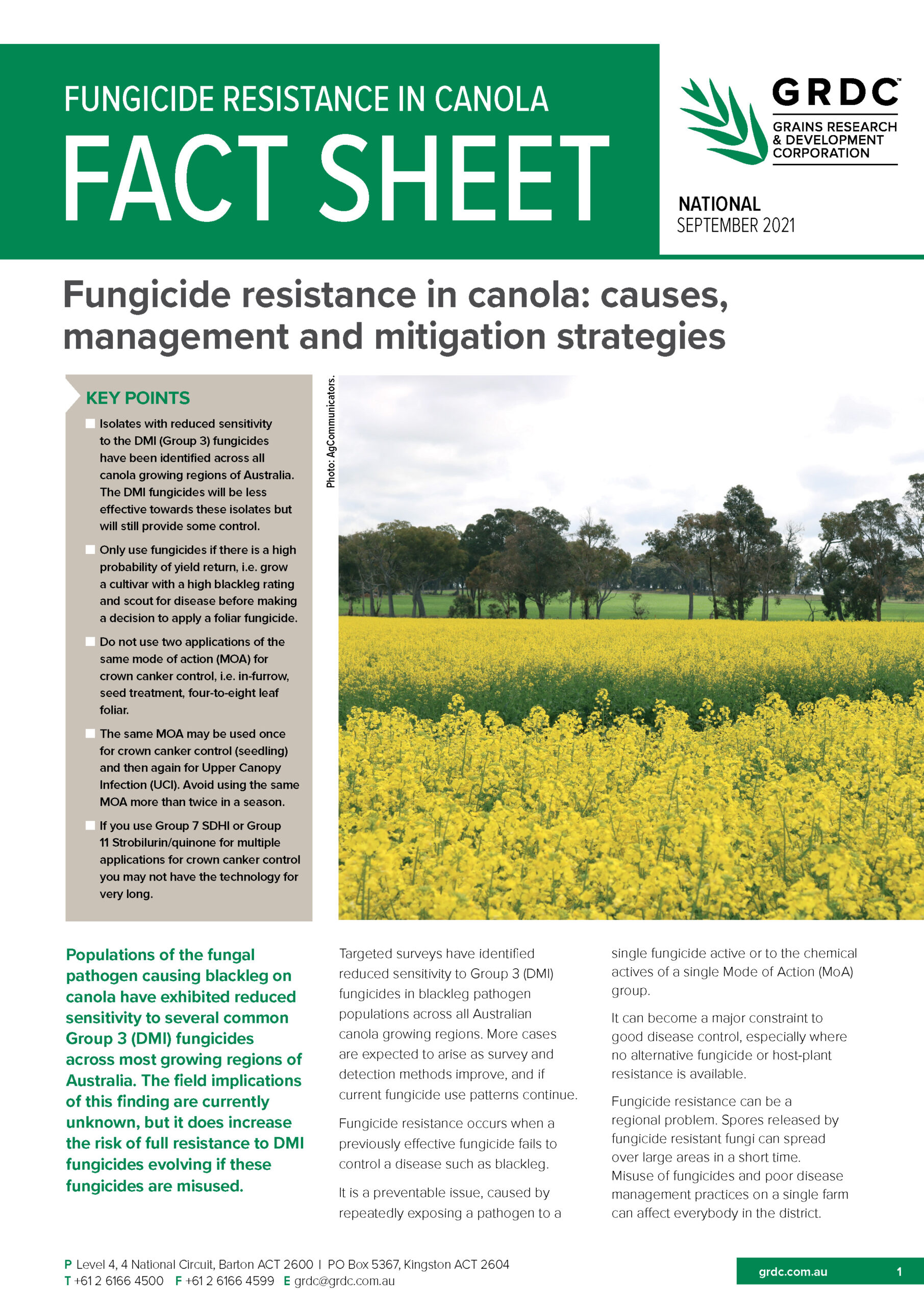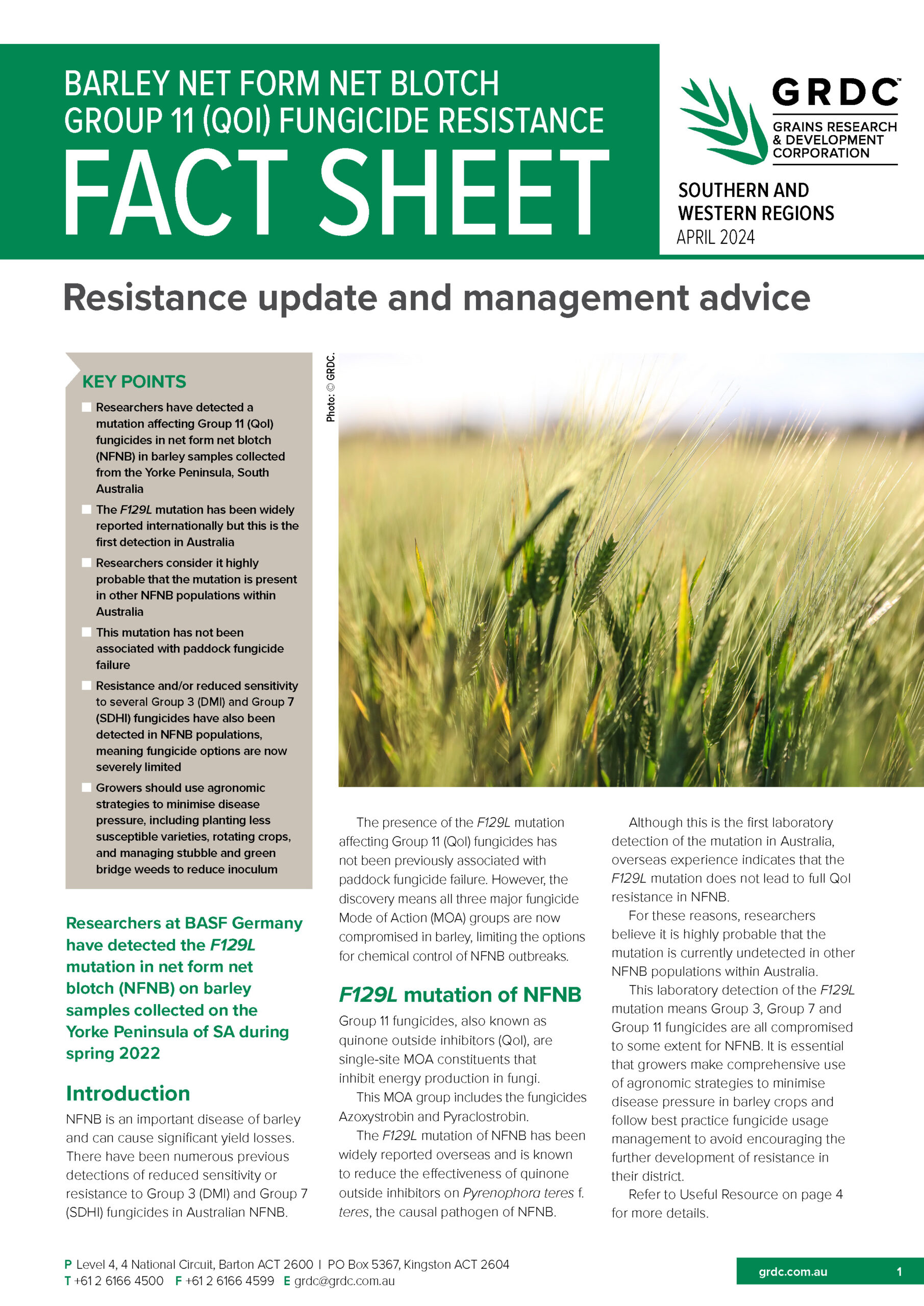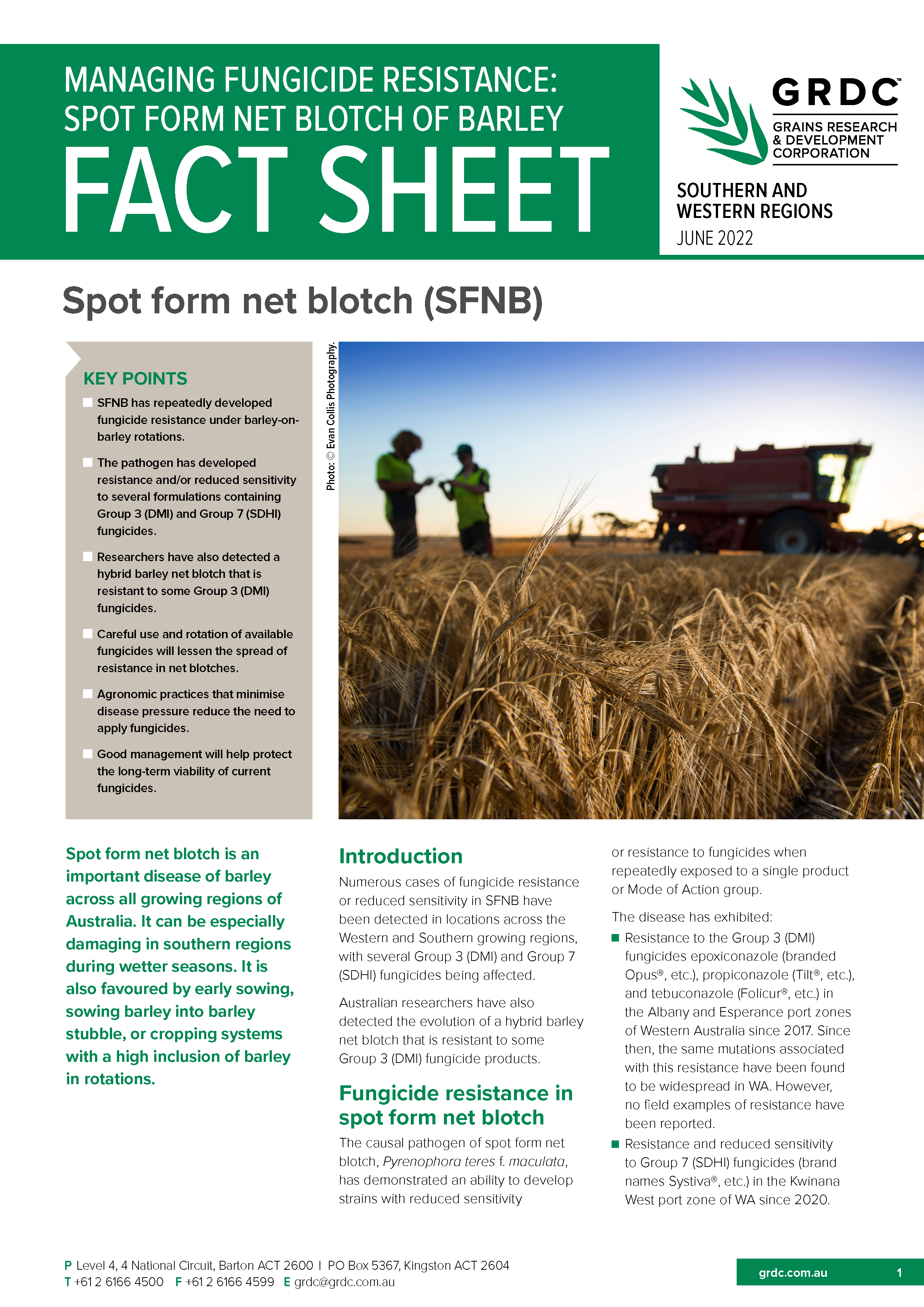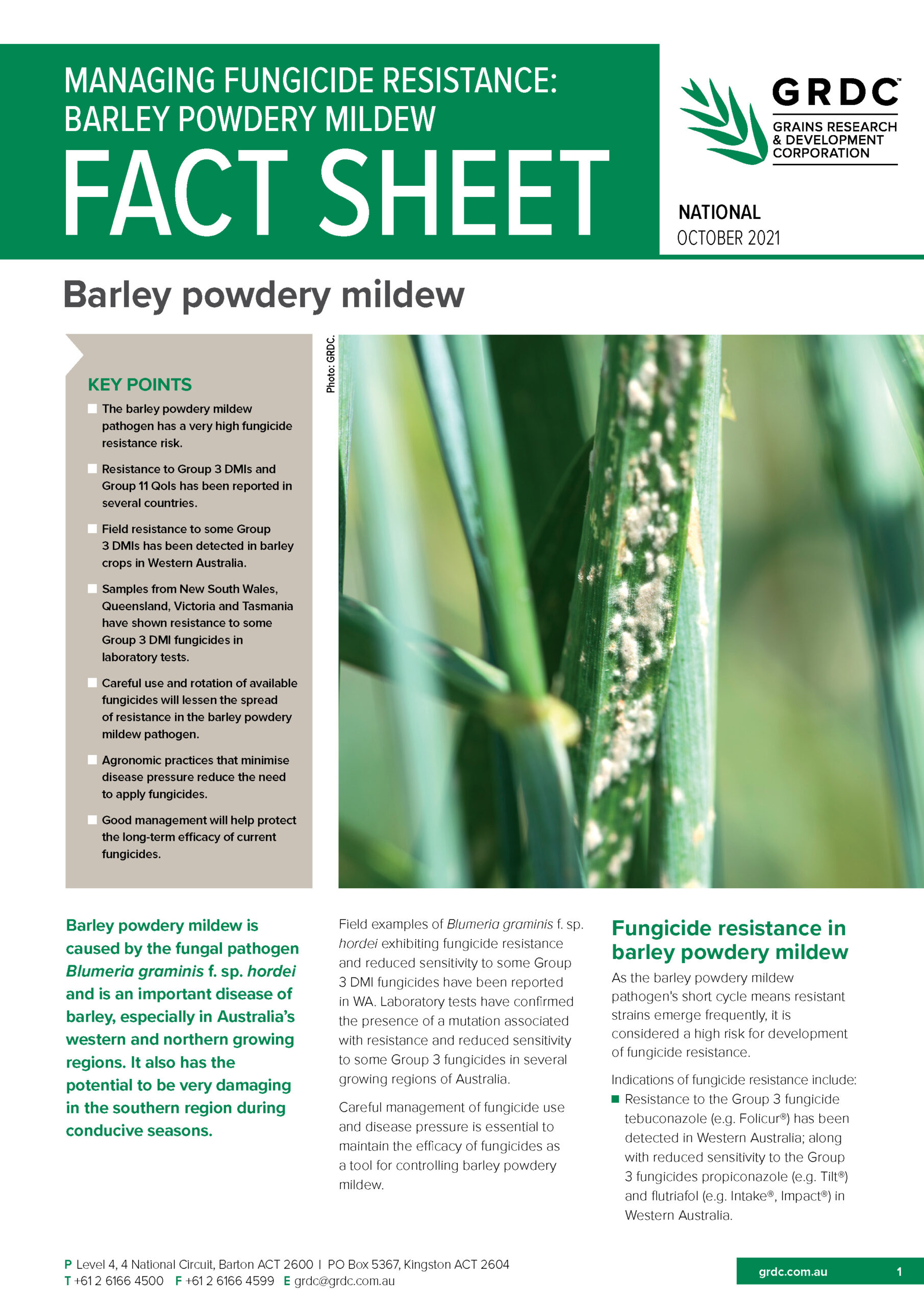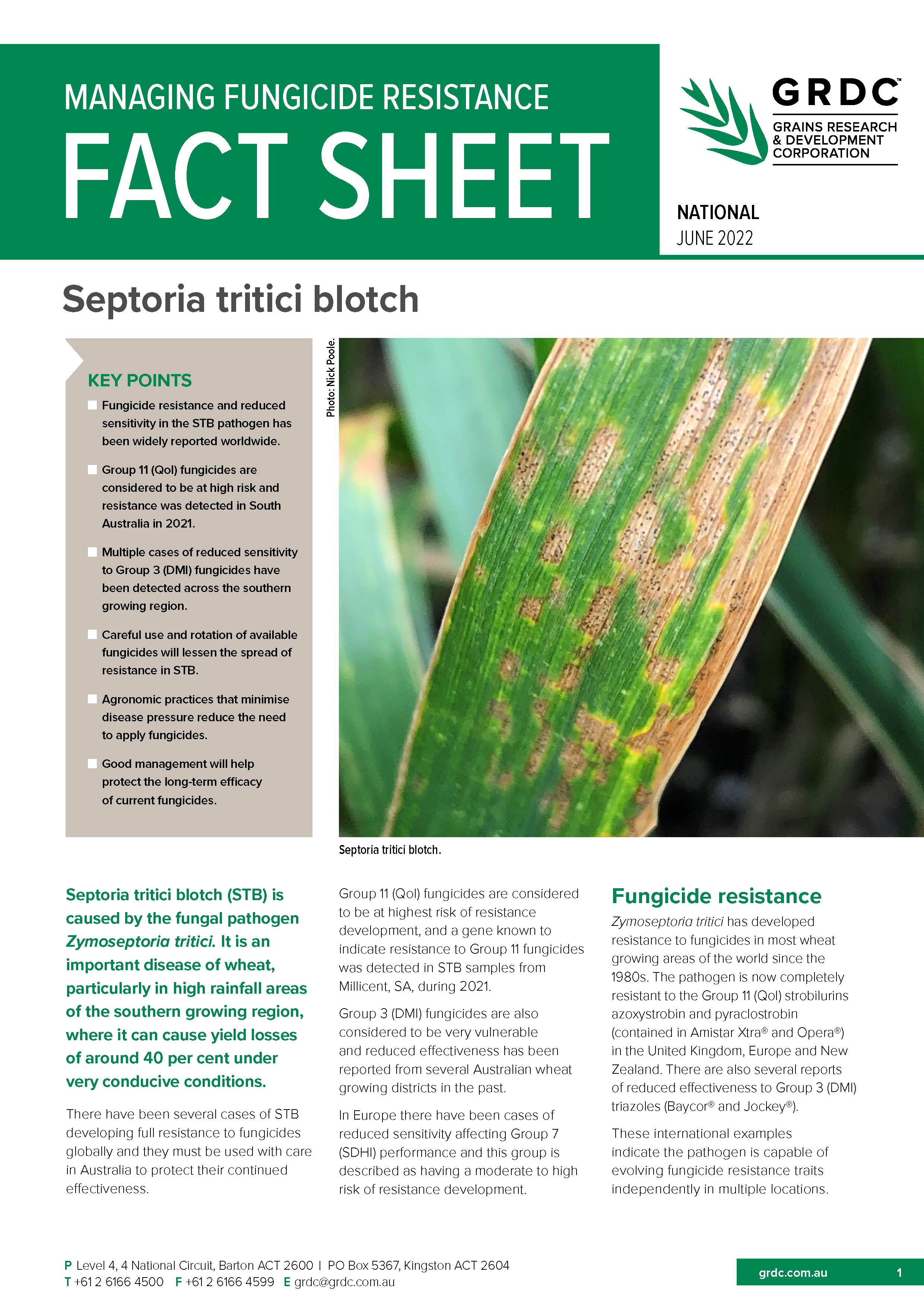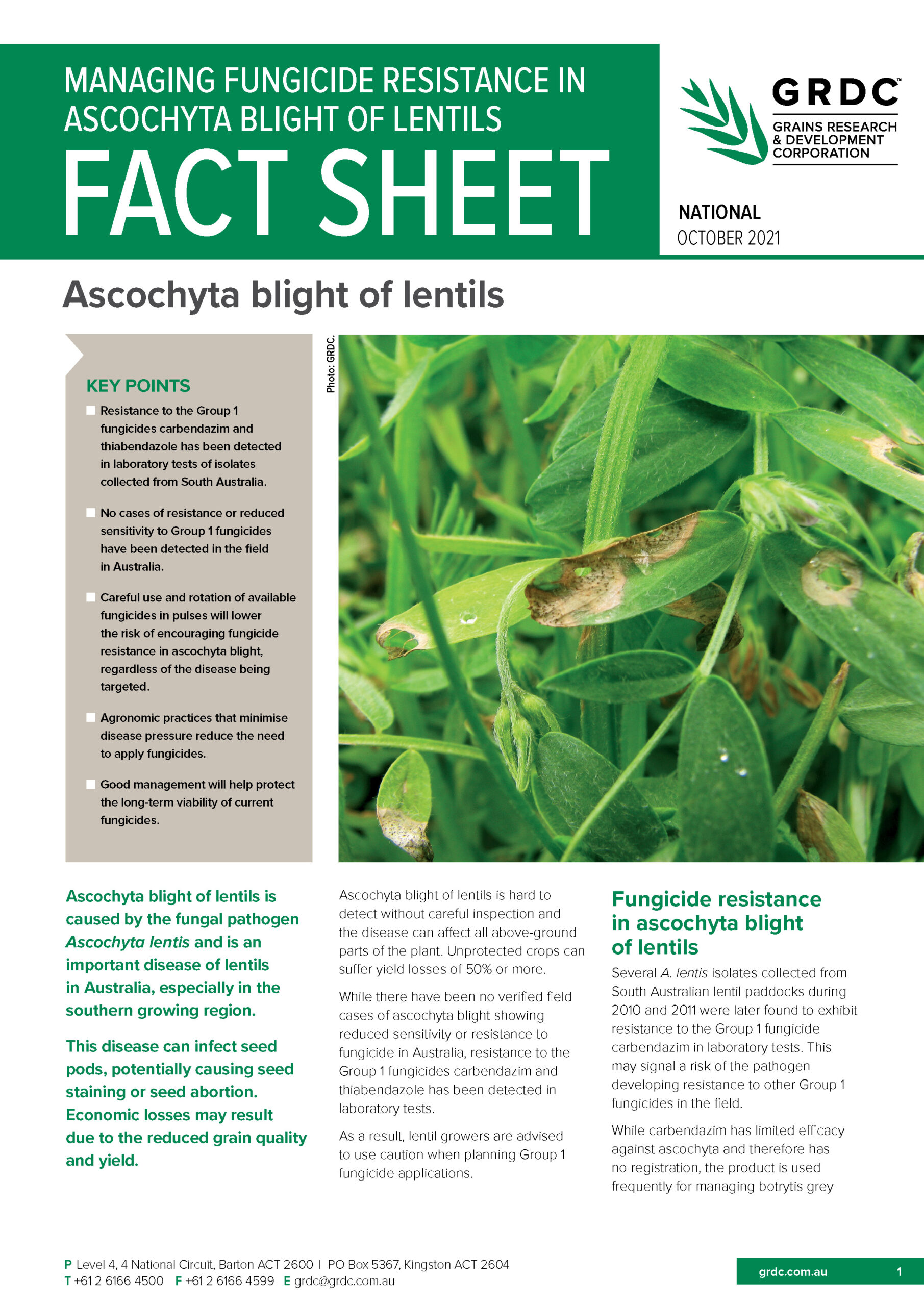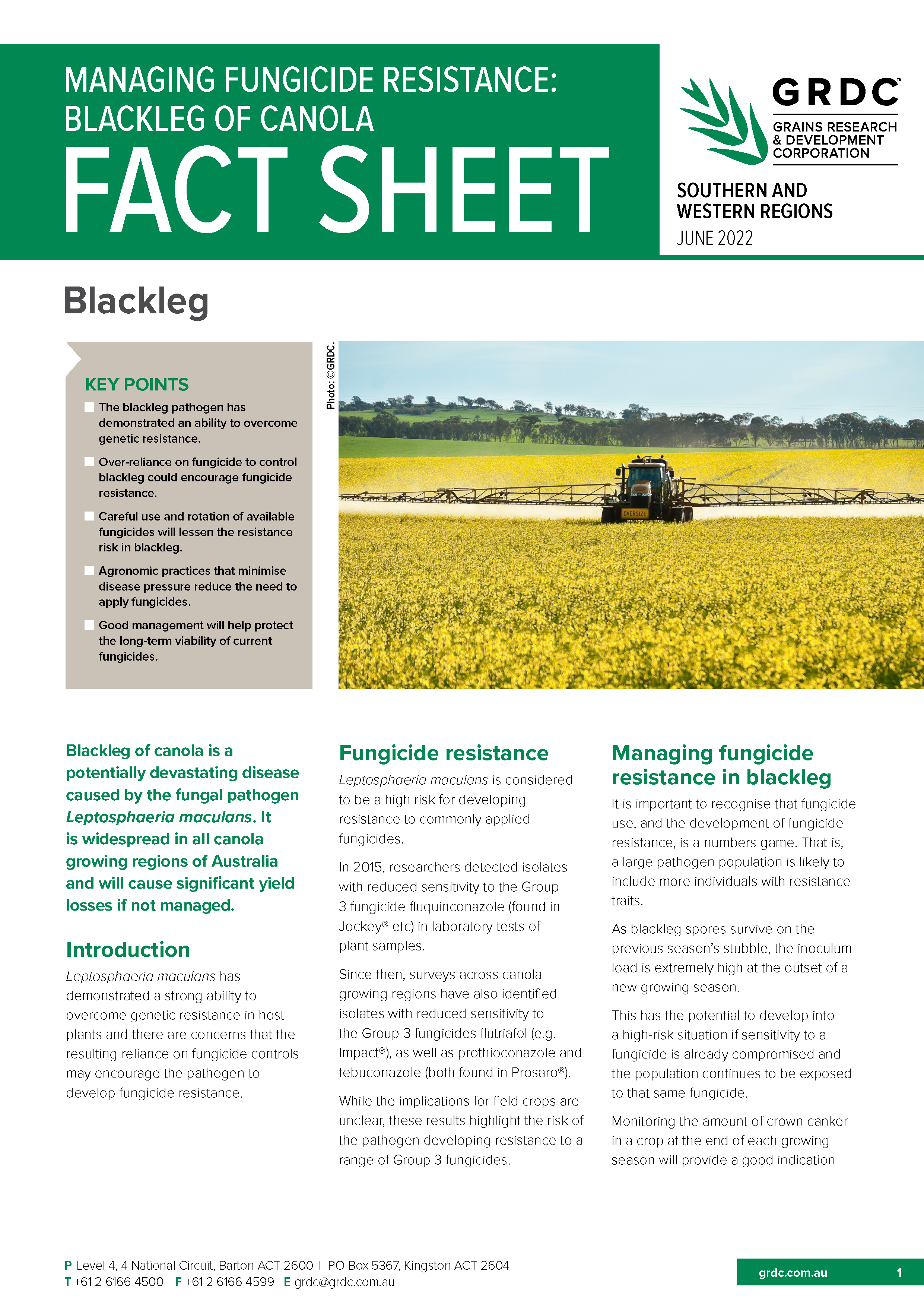Resources – Fact sheets
Manage
disease pressure
Minimise
fungicide use
Engage
with extension
Fact sheets
Fungicides and fungicide resistance
Read more in these fact sheets about what fungicide resistance is and how it develops in cropping systems.
Fungicides in Australia
Fungicides are a valuable tool in crop protection worldwide. However, most are vulnerable to the pathogens they target developing fungicide resistance, so responsible management is essential for preserving ongoing efficacy. There is a limited number of fungicide Mode of Action groups registered for use on crops in Australia.
Fungicide resistance
Fungicide resistance is a serious issue that can affect crop yields in the short term, while impacting on the long term viability of registered fungicides. Understanding how fungicide resistance develops, how it places additional pressure on other fungicides, and how fungicide use should be managed to minimise risk is vital for protecting future crop yields.
Fungicide rotation (New-2025)
Fungicide resistance is caused by repeated use of the same fungicide group. Rotation of fungicide modes of action creates a dynamic environment where resistant individuals are unable to flourish. This fact sheet provides advice on managing, mixing and rotating fungicide products to reduce the risk of encouraging fungicide resistance in crop diseases.
Crop specific fact sheets
Fungicide resistance in wheat
Numerous cases of reduced sensitivity and resistance to fungicides have been identified in Australia’s wheat growing regions. More cases are expected to arise as survey and detection methods improve, and if current fungicide use patterns continue. Fungicide resistance is a preventable issue, caused by repeatedly exposing a pathogen to a single fungicide active or to the chemical actives of a single Mode of Action (MoA) group.
Fungicide resistance in barley
Net form net blotch (NFNB), spot form net blotch (SFNB) and powdery mildew are important diseases of barley that have exhibited fungicide resistance in Australia. All fungal diseases of barley have the potential to develop resistance to any single-site fungicide that is used repetitively. Adopting good integrated disease management and fungicide usage practices now will help preserve the effectiveness of these useful chemicals.
Fungicide resistance in canola
Populations of the fungal pathogen causing blackleg on canola have exhibited reduced sensitivity to several common Group 3 (DMI) fungicides across most growing regions of Australia. The field implications of this finding are currently unknown, but it does increase the risk of full resistance to DMI fungicides evolving if these fungicides are misused. The DMI fungicides will be less effective towards these isolates but will still provide some control.
Fungicide resistance in pulses
Pulse production in Australia is heavily reliant on fungicides to ensure crops achieve their yield potential. This reliance on fungicides poses significant risk that fungicide resistance may develop. Of particular concern is the use of single Mode of Action (MoA) fungicides, such as carbendazim and procymidone, which are used to control Botrytis grey mould and chocolate spot in lentil, faba bean, vetch and chickpea crops.
Pathogen fact sheets
Net form net blotch
Net form net blotch is an important disease of barley across all growing regions of Australia, especially in mid to high rainfall zones of SA and WA. NFNB has repeatedly developed fungicide resistance and reduced sensitivity under barley-on-barley rotations. Careful use and rotation of available fungicides will lessen the spread of resistance in net blotches.
Barley net form of net blotch Group 11 (Qol) fungicide resistance
Researchers have detected a mutation in NFNB affecting Group 11 (Qol) fungicides in barley samples collected in SA. While the mutation has not been associated with paddock fungicide failure, the discovery means all three fungicide Mode of Action groups are now compromised in barley limiting the options for chemical control of NFNB outbreaks. This fact sheet provides more information about the mutation and its implications.
Spot form net blotch
Spot form net blotch is an important disease of barley across all growing regions of Australia. It can be especially damaging in southern regions during wetter seasons. Numerous cases of fungicide resistance or reduced sensitivity in SFNB have been detected in locations across the Western and Southern growing regions, with several Group 3 (DMI) and Group 7 (SDHI) fungicides being affected.
Barley powdery mildew
Barley powdery mildew is caused by the fungal pathogen Blumeria graminis f. sp. hordei and is an important disease, especially in Australia’s western and northern growing regions. It has the potential to be very damaging in the southern region during conducive seasons. The pathogen has a very high fungicide resistance risk.
Wheat powdery mildew
Wheat powdery mildew is caused by the fungal pathogen Blumeria graminis f. sp. tritici. It is a sporadic disease but, in years with conducive conditions and especially in the southern and northern region, it can cause significant yield losses. Careful use and rotation of available fungicide actives will help control the spread of resistance in wheat powdery mildew.
Wheat powdery mildew (NEW-2025)
Wheat powdery mildew is a significant disease of wheat caused by the fungal pathogen Blumeria graminis. In Australia, the pathogen has exhibited resistance to major fungicides and these resistances are spreading to areas with historically low fungicide use. Fungicide resistance traits are now being detected in areas where the compromised fungicides have not been widely used, indicating the airborne spread of resistance genes.
Septoria tritici blotch
Septoria tritici blotch is an important disease, particularly in high rainfall areas of the southern growing region, where it can cause yield losses of around 40% under conducive conditions. There have been cases of STB developing full resistance to fungicides globally and they must be used with care in Australia to protect continued effectiveness.
Fungicide-resistant wheat powdery mildew
Wheat powdery mildew is widespread across the southern region and is becoming more fungicide resistant. Growers should use less susceptible varieties and management options to reduce the risk of resistance developing. This fact sheet helps identify, reduce and manage the disease. Published for GRDC Project: TGC2204-001RTX
Ascochyta blight of lentils
Ascochyta blight of lentils is caused by the fungal pathogen Ascochyta lentis and is an important disease in Australia, especially in the southern growing region. The disease can infect seed pods, potentially causing seed staining or seed abortion. Economic losses may result due to reduced grain quality and unprotected crops can suffer yield losses of 50% or more.
Blackleg in canola
Blackleg of canola is a potentially devastating disease caused by the fungal pathogen Leptosphaeria maculans. It is widespread in all canola growing regions of Australia and will cause significant yield losses if not managed. The blackleg pathogen has demonstrated an ability to overcome genetic resistance. Over-reliance on fungicide could encourage fungicide resistance.
Mungbean powdery mildew
Mungbean powdery mildew is a common airborne disease of mungbean crops that can lead to significant grain yield losses when aggravated by conducive weather conditions and inadequate fungicide control. This fact sheet provides advice on using agronomy and fungicides to manage mungbean powdery mildew so that fungicide resistance is not encouraged.
SDHI resistance in barley net blotches
Succinate dehydrogenase inhibitors, or SDHIs, are some of the most effective chemistries to grace the market in recent years for the management of net blotches in barley. The problem is, they are already under strain in the Southern and Western Regions.
Northern region
Southern region
Western Region
Other resources
Check out some of the other resources available on the AFREN website.
Management Guide
The Fungicide Resistance Management in Australian Grain Crops guide explains fungicide resistance and best practice management strategies.
Blog Posts
The blog posts published provide a snapshot summary of some key messages on fungicide resistance available within AFREN.
Podcasts
Podcasts produced with leading fungicide resistance experts on key topics are available on most podcast streaming services.
Videos
Videos produced to help growers understand how fungicide resistance develops and how to prevent it from becoming an issue.
Case Studies
These case studies provide useful insight into managing fungicide resistance in the cropping system.
Webinars
Webinars were delivered in 2020 and 2021 to provide seasonal updates on diseases pressures and fungicide issues.
Fact sheets
Fact sheets on individual crops, diseases and specific resistance cases are available online.
Other resources
A series of links to other useful online resources regarding fungicide resistance and disease management.




